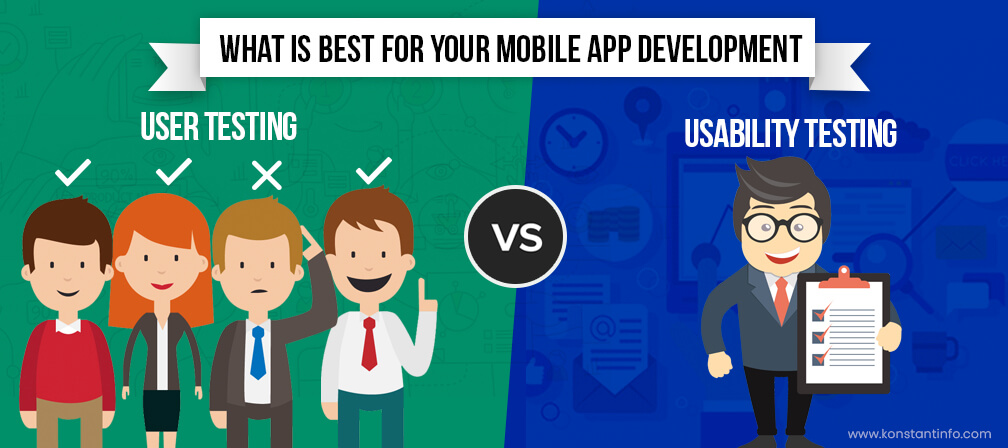
Table of Contents
Success of any mobile app development project lies in how well it is planned and executed. It starts with approaching and building it right and goes till the right implementation and execution. Now, here most crucial part across the stretch of development remains its validation and authentication from different perspectives of usage and application. Here’s where the role and importance of app testing and quality assurance comes in broad and big.
Quality testing reveals a lot about how app is performing and how it behaves with users in different situations and across different communication points. It also finds out what are the loose points of the app that need fixes and allows optimization and enhancement of app from different perspectives – which helps it to perform and serve as expected and required.
Now, how does testing helps you do this? To know this, we have to divide testing into two major technical practices or essentially two different quality analysis phenomena that are known as User Testing and Usability Testing, based on their idea of assessment and the purpose of testing they refer to.
Every app is meant to deliver certain utility and value to its user. And in the end, it is all about how well it is able to interact with them and serve their needs. This is all gauged and measured through different checking parameters that include quality assessment of factors like credibility, desirability, memorability, and satisfaction(encompassing different aspects of product persona and traits) – contributing to User Testing. This form of testing is all about evaluating the app on absolute quality measures aiming at finding how resourceful and capable the app is from the standalone product perspective and knowing if there are any flaws or limitations that detain or lower its ability to serve. So, it can be measured if the app fulfills the factors of viability and competence in reference to the underlying product purpose and applicability.
However, if we talk about (UX) User Testing which can also be called User Experience Testing, it is more into the relative aspect of the app product and aims at measuring how well it is perceived and interpreted from the communication front and how effectively it connects with its users. The major qualitynorms that User Testing aims at measuring are user interaction, product compatibility, process consistency, and user appeal. This allows the app to achieve its goal of suitability and acceptability with users.
However, for many businesses these terms are synonymous, and they don’t really find much of sense keeping them parted. Most of them even can’t differentiate between them as their scope of operation and dispersion is not that broad and far-reaching. But, when you are really concerned about how your product delivers and you are looking to develop a big-size and anextensively detailed product serving a large set of audiences and have a big responsibility to serve, it becomes important to look at quality with eyes of precision and that is only possible if you separate quality into distinctive entities of Usability and User Experience.
User Testing
User Testing looks more into the experience factor and relative value expressed by the product when it comes to communication and interactivity with users. It is about testing the app from the perspective of serving its users and delivering them a certain perception and persona, adding value to the use and interaction with the product.
Usability Testing
The idea behind Usability Testing is to allow customers to accomplish their tasks and get served for their needs. It is more about the service basics and objectivity aspects of the product from the usage perspective. In all, it makes attempt to look into the material validity and practicality of it as a product on absolute basis.
User Testing
User Testing aims at offering the right persona to your app by treating it with a certain theme and incorporating the right elements of communication into it for optimum user interaction. It tests on the quality of service and connectivity and works towards fixing and optimizing the user experience factor of the app to allocate certain brand image and user value to the product.
Usability Testing
The value aspect of the mobile app development results that usability testing aims at identifying is the usefulness and viability of the product from different perspectives like navigation scheme, inclusiveness of communication, design essentials, product features and technical traits. This includes everything that offers absolute resource value that translates a product idea into an evident shape.
User Testing
User Testing is all about detecting and measuring how pleased and satisfied users are with the app. This is all about checking on and brining in quality to the way app delivers utility to its users. This allows the product owner to establish higher level of connection and compliance between the user and the product.
Usability Testing
Questions based on how well the app works are answered while testing the usability of an app. This includes checking on how effectively and easily the app can be used by the user and are people getting enough of solution to their problems/needs with the services and offerings delivered by the app.
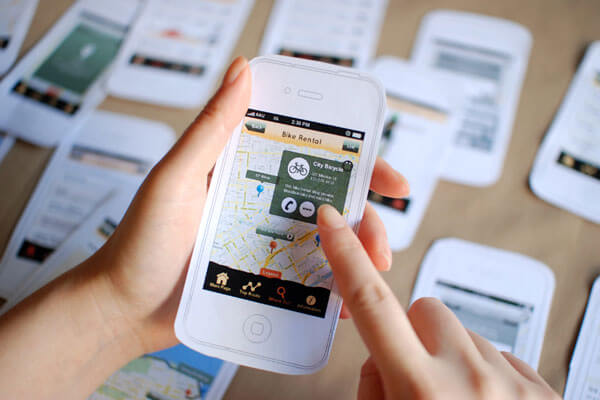
Image source: mofluid.com
It gets easy to understand how User Testing and Usability Testing work when you put them into a real-life scenario. Also, with a use case you get the flavor of their offerings in an actual situation and there you would be able to compare them against each other – seeing which method of testing best suits your quality assessment requirements.
Let’s take up a case of a food ordering app for a chain of restaurants. The app primarily allows users to search and navigate through different branches/delivery points and food choices as per their preferences and convenience. To allow users with best of utility and value, the app offers an array of features that cohesively and comprehensively connects users with the service.
Now to make sure that everything on the app – from registering your foodie profile to referring to a menu and ordering food –complies well with the quality propositions, the app needs to flow consistently and respond flawlessly throughout. And this is possible if the features and resources are well-knit together and the product components are all intact to serve you as a complete unified solution allowing user to connect with the restaurant services seamlessly.
To make sure all the perspectives of a useful and value-defining app product are accomplished well, Usability Testing plays a significant role.
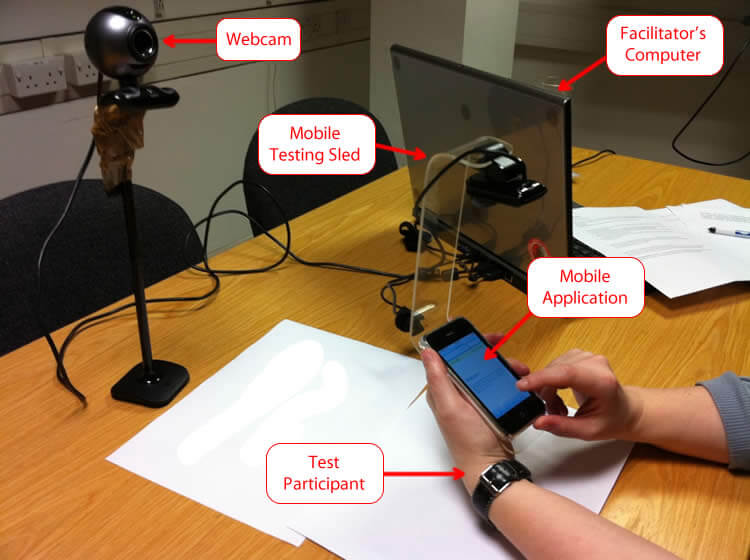
Image Source: klientboost.com
Ideally with Usability Testing bugs and limitations related to performance of the app are fixed in the first place. Then as per the scope and requirement, product enhancement is planned, going with standard trends and taking model usage references – aiming to accomplish quality in terms of usability of the product. These processes can overlap and be switched as per business requirements and needs.
“Usability – the extent to which a product can be used by specified users to achieve specified goals with effectiveness, efficiency, and satisfaction in a specified context of use.”
– ISO 9241-11
Here, the entire process of user joining in to making payment through the app is tested for allowing seamless communication and consistency with processing queries. The app is tested for performance looking into the factors like accuracy, validity, security, response-time, steadiness, actionability, symmetry, and congruency.
So, if you are searching for the nearest restaurant, it should be detecting the distance correctly based on your current location and allow you to place order accordingly. Further, as you search the food item, you should get apt and optimized results as per the query. Here, it is important that the item you searched for is defined and placed categorically (like in case of veg and non-veg food) and is all presented with details like price and availability. Once you place the order you can make the payment securely and this is accompanied with proper acknowledgement and receipt. Here, there should be no glitches in the entire process and you are delivered with the food that you ordered, on time.
Also, in case of Usability Testing the product should be checked for the quality of presentation and appearance as these inseparably go with aspects of performance and delivery of an app. So, you have to look if design elements are in place and if the resource attributes perfectly suit the format and commit to the idea of app communication well.
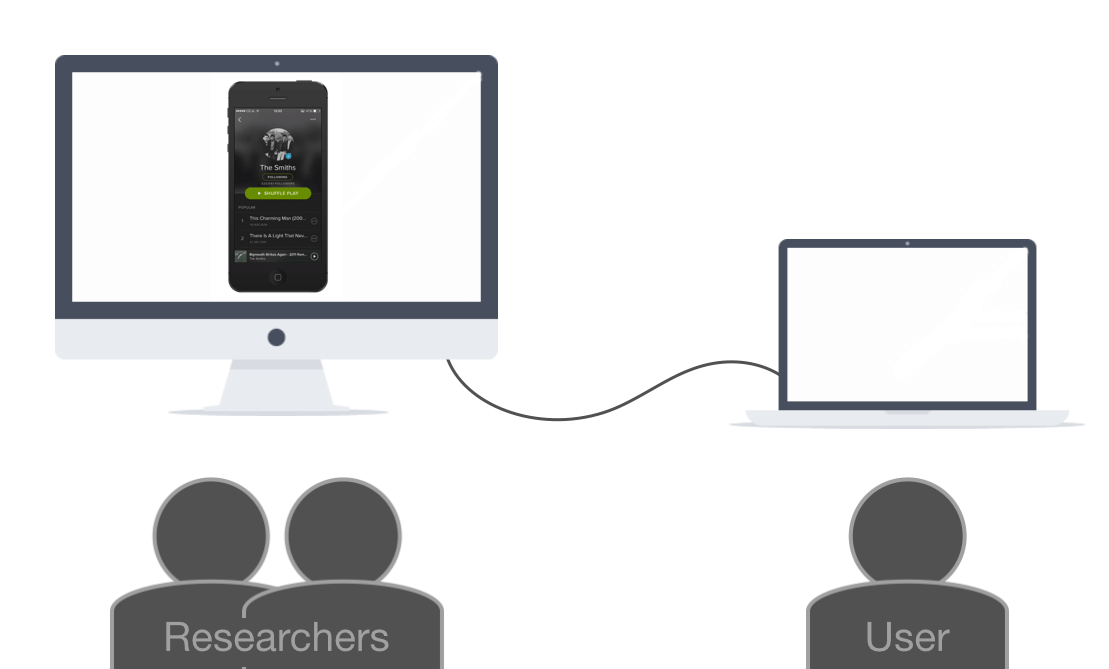
Image source: cloud.netlifyusercontent.com
With User Testing you into the design from the user experience perspective. This is to make sure that the app design not only works well but also engages and offers users with enough of communicative value and preferential utility, interacting with them intuitively and responding to their needs contextually. With this User Testing aims at going beyond just being ‘useful’ and making attempts towards allowing users to put up with great experience of using the app – tapping in properties that make it effortless, easy,responsive and collaborative in its traits and offerings.
“User Experience – a person’s perceptions and responses that result from the use or anticipated use of a product, system or service. UX includes all the users’ emotions, beliefs, preferences, perceptions, physical and psychological responses, behaviors and accomplishments that occur before, during and after use.”
-ISO 9241-210
User Testing attempts to ensure quality in terms of reception, orientation, detailing, involvement, and communication; offering the user with superior experience interacting with the app. The factors that need to be taken into consideration here are usefulness, desirability, credibility, accessibility, find ability and conformity in reference to the user experience.
Here, in case of a restaurant app,User Testing can be interpreted as presenting the product in a theme that complies with and depicts the look and feel of the domain. The format of solution should cover all the elements and features that deliver a complete range of offering that should finely support the idea of online food delivery. Further, it should be search-friendly and offer users with no-brainer results. Like in case if they are looking just for the take-away points offered by the restaurant, it should have an option that separates themon the basis of a query like service-type. Or it should offer them with refined applicable triggers to find results for that particular business. And this should be functionally aligned with location options to sort out results dynamically. Also, if you just remember a dish’s name partially, the system should be able to auto-suggest similar names to help you with the search.
This also should be well-supported with appropriate gestures, illustrations and transitions to make user experience richer. So, when a user taps on a button to enter the food menu, the event should be supported by a prominent flash or press response to acknowledge that the action has been processed successfully. This can be further supported by a ballooned/callout message that appears to guide you through the next step, to make you easily and effortlessly access the menu and order your food.
Also, when you are done with ordering your food, it should ask you to deliver the food at the previously saved address while allowing you to change the address then and there at the time you proceed to payments.All this smart communication with the app should be so smooth, neat and interactive that you don’t have to think twice or look back in the entire process of food ordering.
| Test Type 1: Free Exploration Test | Test Type 2: Eye-tracking | Test Type 3: Receptivity Test | Test Type 4: Performance Test | Test Type 5: Security Test | |
|---|---|---|---|---|---|
| Orientation | Summative | Formative | Formative | Summative | Formative |
| Purpose | To find out the product usage validity | Presentation and visual appeal | Approach to mapping and navigation | Organization of content, layout, task flow, controls | Determining level of security |
| Quality Measures | Measuring the authenticity and cogency of the app Consistency and ease of navigation and flow Inclusiveness of the app usability Layout-content composition | Testing design detailing and visual accord Time spent on a particular section or area Checking on access traits and patterns Text-graphic ratio | Navigation design Flow of communication Page-loading rate Layout responsiveness | Layout and content configuration Accuracy and relevancy of app resources Task processing and completion rate Response and revert rate | Checking and validating the coherence between app resources Reviewing user penetration and communication scheme Inspecting loops and gaps in security layers Secured payment and data encryption |
| *This contains Testing references that cover both the Test types and their resources/traits overlappingly. | |||||
Practically on technical grounds there may be difference between the approaches of the two testing methods but there is no clear mark identifying them distinctly when it comes to applying them for quality assessment – as many approaches and traits of User Testing and Usability Testing are coinciding and purposes are overlying.
So, going with any of them you may end up covering a part of the other. But if you would like to know which one to pick up as a guide to help you achieve the best of quality goals for your product, you should look into the kind of service it is meant to deliver and how you attempt to connect with users.Here, in the case of a restaurant app and for the most part of it the most relevant and applicable method of testing is Usability Testing as it looks to serve more in terms of Performance and Functionality.
However, if you are into an eCommerce business, your app would be dealing more with User Tendencies, Market Trends and Buying Preferences and these factors can be best served with quality going with User Testing.
Looking at that, if your app is more into delivering a utility and is primarily based on features that are performance-oriented, Usability Testing (measuring aspects like content consistency, presentation and ease of navigation) is more of your stuff. Otherwise, if it is more about delivering perception and allowing users to have a certain experience using the app, you should be concentrating more on User Testing (checking on the reception, contextual appeal and intuitiveness of the app).
May what be your approach towards testing your app as per the guided theory, you should take reference of the purpose and goal that are unique to every product. Be it Usability Testing or User Testing – Now as you know how they differ in their orientation and purpose of allowing you to assess quality, you can better understand how and what fits in to serve you best. Go with what makes you achieve the best of quality objectives and aspirations and you will be fine and should see best results coming your way!
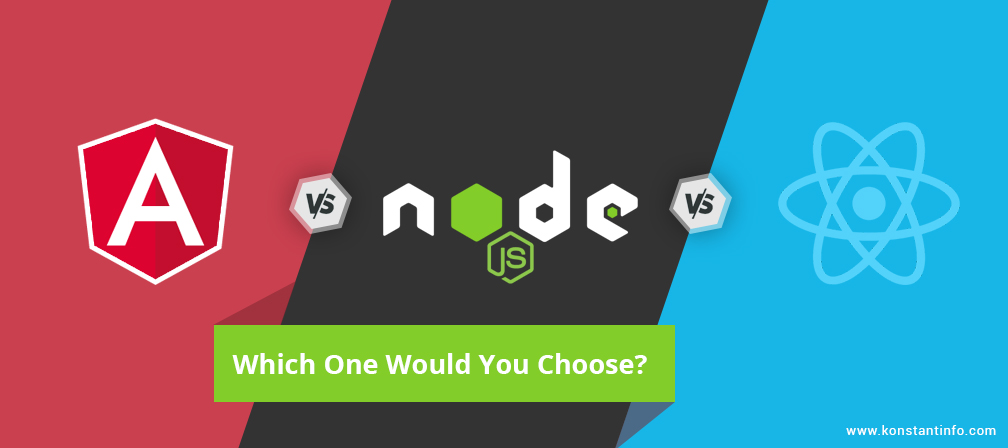


A marketing graduate, a deemed strategist, a sure geek - Tushar is a fine blender of the art and science of writing. When it comes to tune up content with commerce, he knows the trick. For him, if words don’t make you think and beat, they are not worth your time. A crazy foodie, an unfailing jogger – that’s him off the desk!
Or send us an email at: [email protected]